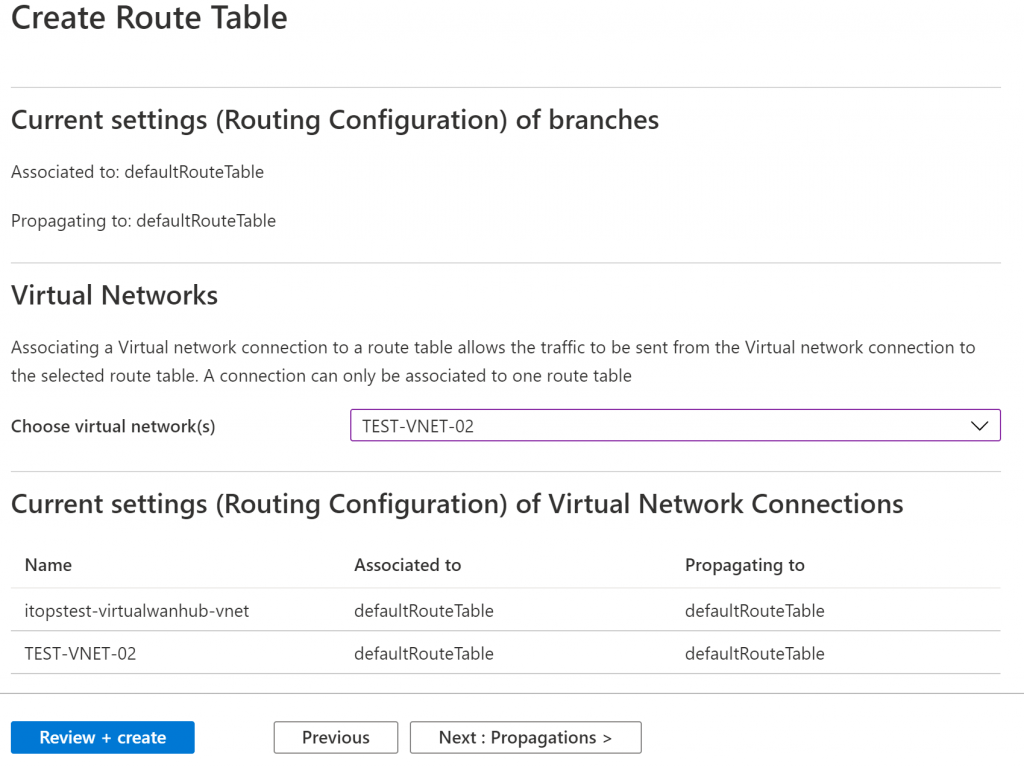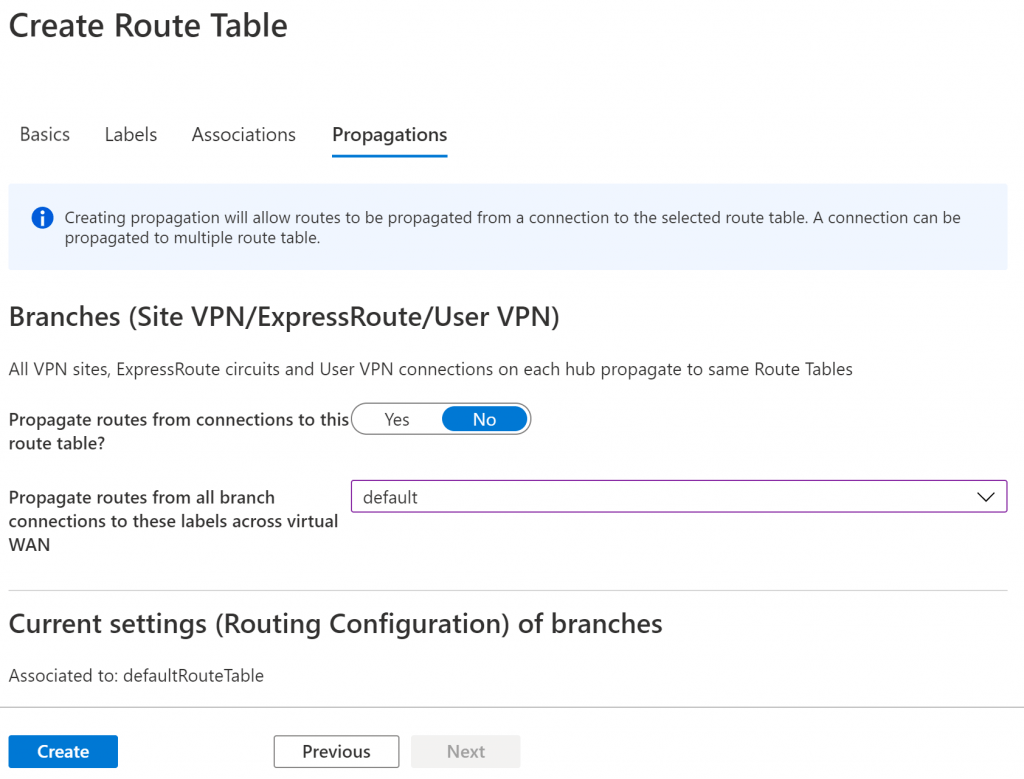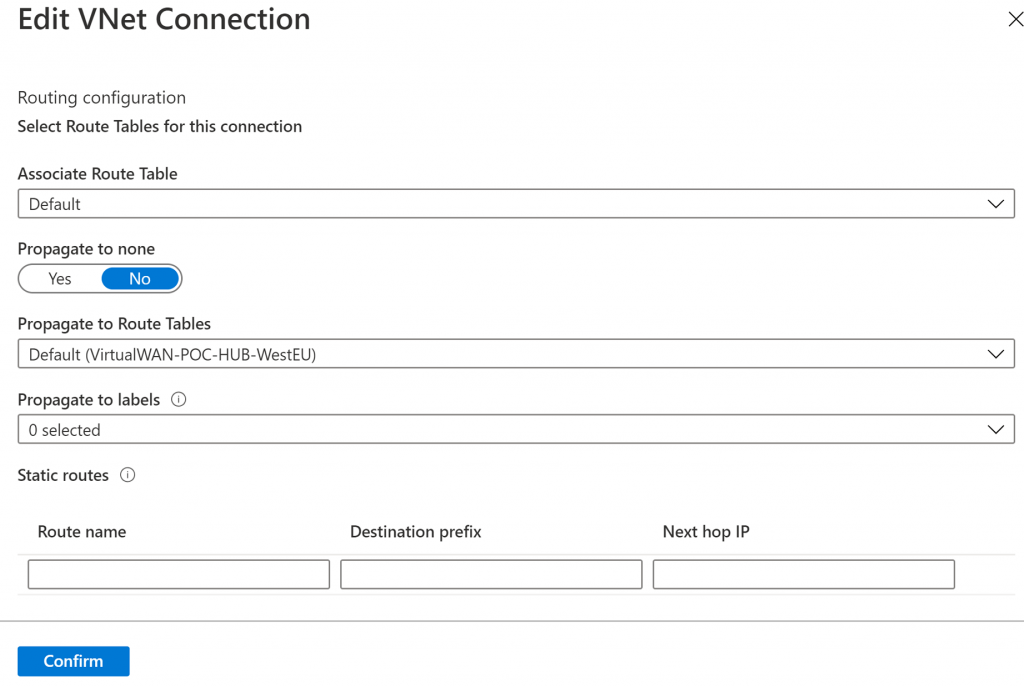Introduction
Last week, around August 26-27th 2020 Custom Route Tables in Azure Virtual WAN lit up in my Azure Tenants. Awesome news. Normally this should have happened the week of the 3d of August 2020. However, some delay happened. Now it is here is has come in silence. Which I find odd. This is a major capability that offers so much of what we need to make Azure Virtual WAN shine. But it is here, ready to shine at Microsoft Ignite

Custom Route Tables in Azure Virtual WAN
What do we have now? You can read up on Azure Virtual WAN route tables over here. I have made a video about all this which you can find on my blog and on my Vimeo channel. Please take a look for some walkthroughs and links to some other blog posts by me on Azure Virtual WAN.
LabELs
First of all, let’s discuss the labels. Labels logically group route tables. These are very helpful when propagating routes from connections to multiple route tables. The Default Route Table has a built-in label called ‘Default’. When you propagate connection routes to the ‘Default’ label, it automatically applies to all the Default Route Tables across every hub in the Virtual WAN.

Associations
Now, we can discuss associations. Each connection is associated with one route table. This means that the connection can send to the destination indicated as routes in the route table it is associated with. The routing configuration of the connection will show the associated route table. This is very important for connected VNETs. Multiple connections can be associated with the same route table. Note that all VPN, ExpressRoute, and User VPN connections are associated with the same (default) route table.

By default, all connections are associated with the Default route table in a virtual hub. Each virtual hub has its own Default route table. You can add one or more static routes to the default Route table. Static routes take precedence over dynamically learned routes for the same prefixes.
Propagations
Last but not least, connections dynamically propagate routes to one or more route table. VPN, ExpressRoute, and User VPN connections propagate routes to the same set of route tables. With connections like a Site-2-Site VPN, Express Route, or Point-2-Site VPN, routes are propagated from the virtual hub to the on-premises router using BGP.


A “None” route table is also available for each virtual hub. Propagating to the None route table implies that no routes are propagated from the connection.
Some need to ask
Finally, some customers need to reach out to support in order to get Azure Virtual WAN Custom route tables to light up.

As a result, I suggest you do so to start kicking the tires and then dive in deeper. This is a cornerstone technology for Azure networking going forward.
Automation
I have not found any documentation or guidance in regards to automation with PowerShell, Azure CLI, or ARM templates yet. I expect this to be forthcoming as this is much needed. As a result, I hope we’ll see this by Microsft Ignite 2020.
Conclusion
Azure Virtual WAN with the secured Virtual Hub and custom route tables offers the capabilities we have been waiting for. With these capabilities in place. Azure Virtual WAN is the future of Azure virtual networking. Therefore, I fully expect to hear a lot more about it during Microsoft Ignite in September. I personally will focus on this part of networking in the coming months. It is a stock part of any Azure initiative and project in the near future.
